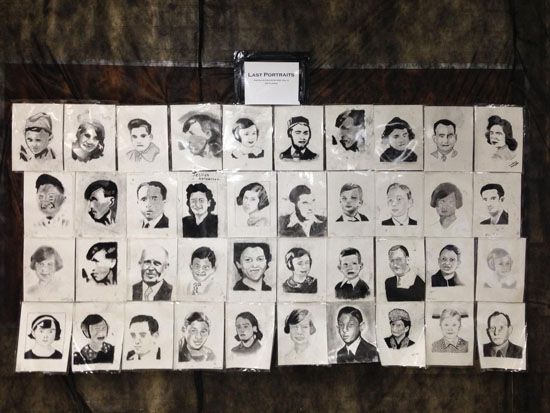
Leslie Schaffer
The students in Leslie Schaffer’s Holocaust studies elective last semester didn’t visit a Holocaust museum – with the help of IWitness, they created their own.
Schaffer, a guidance counselor at Abbeville High School in Greenville, SC, who also teaches an interdisciplinary Holocaust elective course, said because the school isn’t located close enough to a Holocaust museum for the students to visit, her class came up with the idea to make their own museum at their school. She discovered IWitness while brainstorming for the project and thought immediately that it would be “perfect.”
Inspired by the Tree of Testimony at the Los Angeles Museum of the Holocaust, in which dozens of screens each display different testimonies from USC Shoah Foundation’s Visual History Archive in a single room, the class decided to create their own mini-documentaries which visitors to the “museum” could watch in their school’s computer lab. They constructed 23 videos in IWitness that covered a range of topics, including ghettos, Kindertransport, anti-Semitism, and life after liberation.
Schaffer said watching testimony in IWitness had a powerful impact on her students – even stronger than when they watched documentaries or read about the Holocaust.
“When they got to hear what the survivors actually had to say, I think that really brought something home to them,” Schaffer said. “It wasn’t coming from ‘my teacher,’ it wasn’t coming from something they were reading, it was from someone who actually experienced it.”
Students would often tell Schaffer and their classmates to watch certain testimony clips that they found interesting or moving, and Schaffer said she valued the opportunity IWitness gave them to be “historians” by finding clips and deciding what to include in their videos on their own.
“They do better when they discover it themselves than when I tell them what they need to discover,” Schaffer said.
One of the most useful aspects of IWitness for Schaffer was the Ethical Editing video, which she said helped the students understand how music and editing could alter the perception of the survivors’ words.
Schaffer encourages other teachers to use IWitness even if they don’t feel tech-savvy because even if they need their students to help them figure it out, it becomes a learning opportunity for the students. “Let them lead these projects and you’ll get something far beyond what you hoped for,” she said.
IWitness allows students to continue hearing firsthand accounts from Holocaust survivors even as they become less and less able to visit classrooms in person, Schaffer pointed out, and simply experiencing the vastness of the Visual History Archive and the breadth, emotion and depth of the survivors’ testimonies can teach students just how immense and severe the Holocaust really was.
“There are teaching opportunities in just about every segment of the videos,” Schaffer said.
Below: Schaffer's class's Holocaust museum at Abbeville High School:



